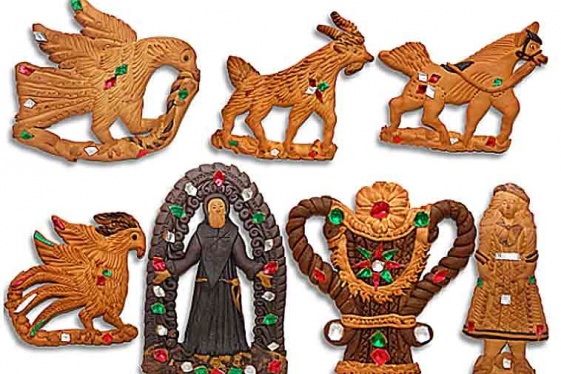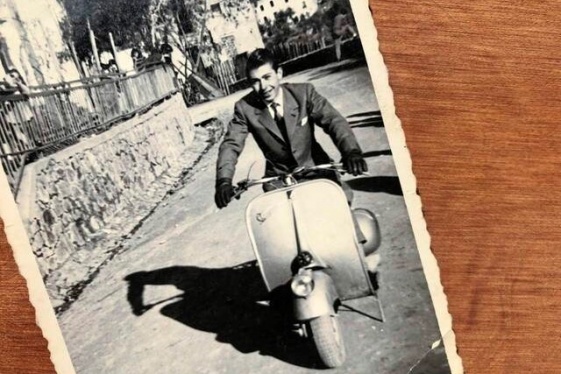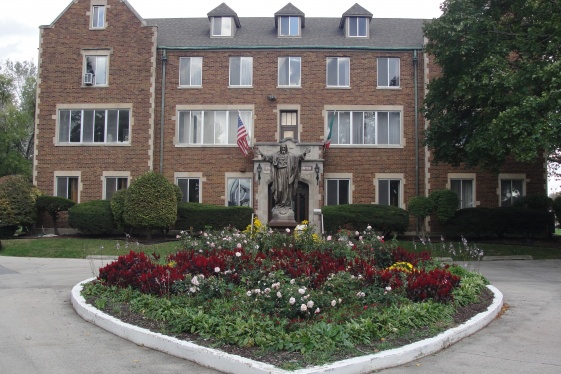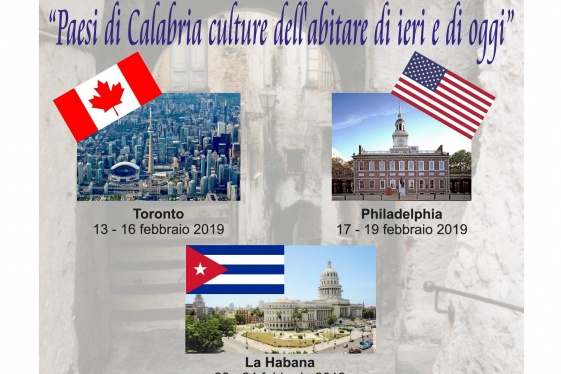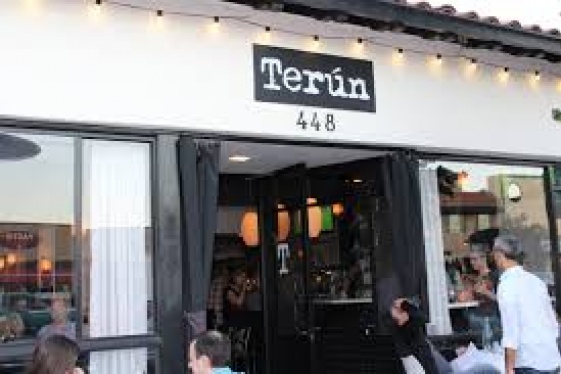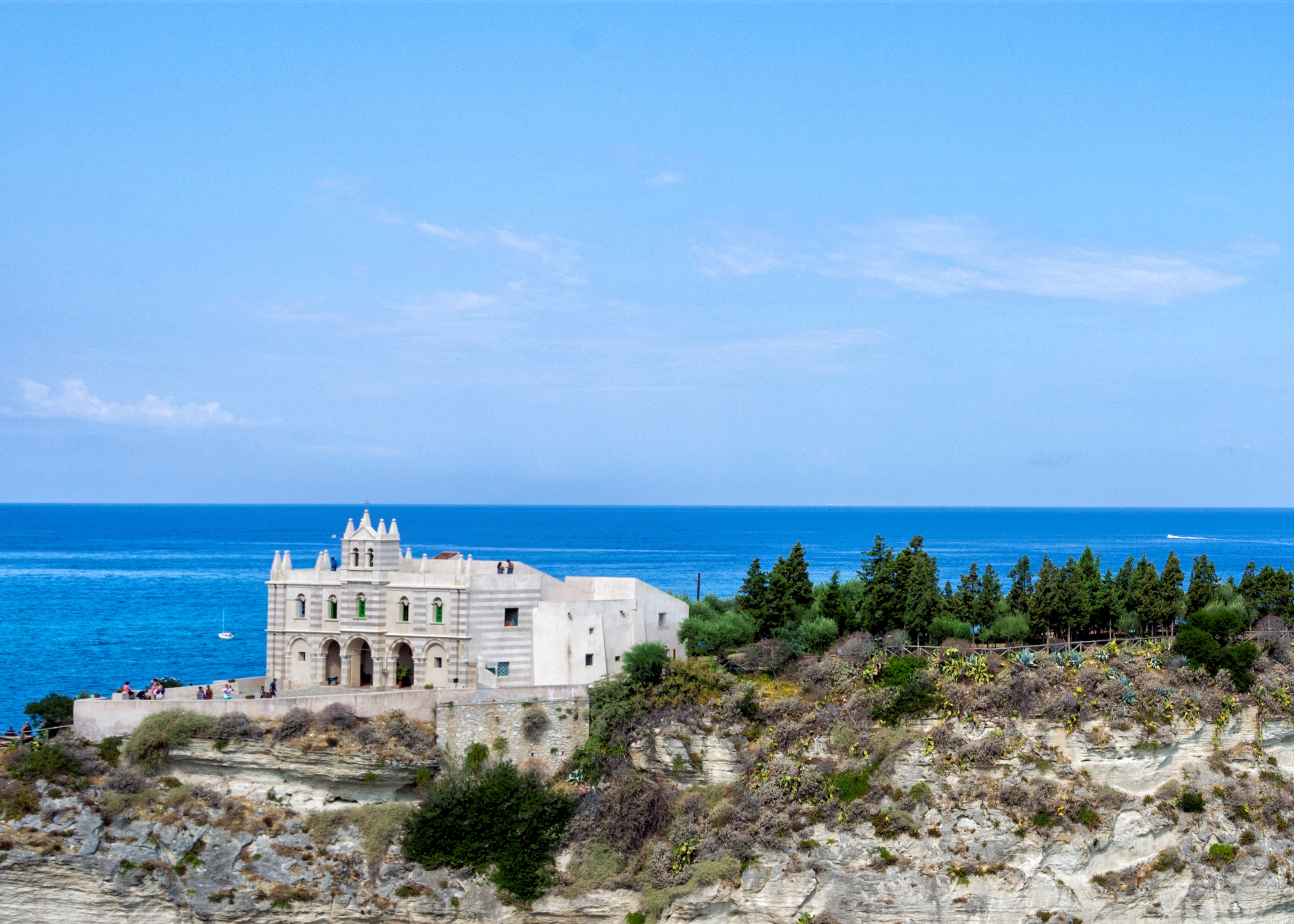

The historical center of Tropea leans out on the Tyrrhenian Sea as a precious casket of history, myth, legend that opens to the visitor. The architecture of the patrician palaces is articulated between suggestive streets and airy wide with the sumptuous portals in granite and local tuff. The churches and the convents, testimonies of the ancient religious fervor, offer the tourist a unique variety in a space of just seven square hectares.
The Co-cathedral Church founded by the Normans in 1163, contains inside the Icon of Our Lady of Romania (XIV sec.), Patron of Tropea, the tomb of the philosopher Pasquale Galluppi, the mausoleum of the family Gazzetta (XVI sec.), the Black Crucifix (XV sec.) and the tomb of Blessed Francesco Mottola. The Chapel of the Holy Sacrament with paintings of the school of Tropean painter Giuseppe Grimaldi (XVIII sec.), the statues of Our Lady of the People and Our Lady of Liberty (XVI sec.).
The Church of Jesus shines inside of precious marble altars and eighteenth-century paintings of Calabrian painters, among them stands out the large canvas of "The Nativity" by Giuseppe Grimaldi (1731).
The Overlook "Raf Vallone", is the most beautiful panoramic point of the Mediterranean, symbiotic meeting between sky and sea, with the view of the Gulf of St. Euphemia, the Aeolian Islands and the Sanctuary of Santa Maria dell'Isola.
Santa Maria dell'Isola, is an ancient hermitage founded by Orthodox monks (VI-VII sec.) and then became a Benedictine sanctuary in the eleventh century. Symbol of Tropea and Calabria in the world, with the lush garden of Mediterranean vegetation and the panoramic terrace overlooking the cliff of Tropea.
The spirit of the place
The sunny welcome of its inhabitants is the special resource that renews the desire to return to the village resplendent on the sea. What makes Tropea truly unique in the world is the extraordinary symbiosis between history, environment, tradition and intangible heritage.
Already since the seventeenth century travelers erudite Europeans during the "Grand Tour" in Calabria stayed in the ancient aristocratic village, fascinated by the myth of its founder, Hercules, and the enchantment of the view of the Aeolian Islands on the horizon, evoking the Homeric epic. The beauty of the Sanctuary of Santa Maria dell'Isola has been immortalized by several artists who stopped in Tropea. Still today it is the religious and touristic symbol of Tropea and Calabria in the world.
Tropea over the centuries has always managed to maintain its autonomy and administrative freedom against various feudal lords thanks to the interventions of the Spanish sovereigns who protected the state for its renowned: Antiquity, Beauty and Nobility.
The testimony of this great heritage shines in the old town, overlooking the sea, with a valuable alternation of patrician palaces with sumptuous portals, churches from the medieval face, Renaissance references, baroque and neoclassical features along with convents that keep alive the memory of religious fervor. The picturesque wide and the panoramic overlooks mark with bewitching ecstasy the visitor who for the first time goes through the streets full of history, legends and mysteries.
The echoes of the epic Magna Graecia, Roman and early Christianity, of the Arab, Byzantine, Norman, Swabian, Angevin and Aragonese dominion are captured in the fine architecture, monuments, in the archaeological and artistic heritage exhibited at the Diocesan Museum and in the variety of festivals and cultural events that offer tourists unique opportunities to feel fully part of a millennial history that makes Tropea an emblematic center in the heart of the Mediterranean, a land that has always found regenerating sap from its integrative identity.
With its millennial patrimony and its incomparable human resources it connects to full title in the celebration of the history and the national culture: "Tropea is beautiful, because to be able to look at the sky it makes to aim high, it is faithful because it will maintain its promises, it makes free because it itself has been and will have to be free..."
The Name
According to Strabo and Pliny the Elder the first name of Tropea would have been Portercole (Herakleioslimén - PortusHerculis). After having overcome the twelve labors and defeated the giants that raged in Calabria, Hercules during his return trip to Greece would stop on the cliff uninhabited to rest. To pay homage to this welcoming land that gave him rest, he decided to found a city in honor of his nurse (Hera-Juno), in ancient Greek nutrice is translated: tropheia. Another origin linked to the antiquarian tradition reported byLascaris and Parrasio wants a re-foundation of the city by the Roman general Scipio Africanus, who, after defeating Hannibal in the famous battle of Zama, landed with his fleet at the cliff of Tropea placing his victorious trophies: trophea.
The History
The first human evidence dates back to the Bronze Age (XVI BC) and the Iron Age (XII-IX BC). Necropolis of the IV a.C. indicate the Greek presence in this area. In 536 was raised the city walls by the general Belisario and in 649 is present the diocese. After some Arab brackets, Tropea becomes again a strategic Byzantine stronghold. In the XI sec. it passes under the Normans which start the religious latinizzazione of the territories building the Cathedral and giving the Sanctuary of Saint Maria of the Island to the Abbey of Montecassino. Under the Swabians begins a period of economic and commercial prosperity. During the wars between the Angevins and the Aragonese, it remained faithful to the latter (hence the motto in its coat of arms "Sola Tropea sub fidelitateremansit''), which allowed it many fiscal and administrative privileges. Tropea dominated a vast territory consisting of villages (hamlets), they produced goods, which, in addition to meeting the needs of the city, were put on trade in the main Mediterranean routes.
Towards the end of the fifteenth century arose the Accademia degli Affaticati, a cultural nucleus composed of poets and intellectuals. During the battle of Lepanto (October 7, 1571), Tropea participated with three galleys commanded by Colonel Gaspare Toraldo. In this period operated the Vianeo brothers, inventors of rhinoplasty. In 1783 it was hit by the serious earthquake of central-southern Calabria, which caused extensive damage. Under the direction of Eng. Sintes were undertaken works that changed forever its urban layout, creating the wide and small squares that characterize its historic center. Between 1831 and 1846 the Tropean philosopher Pasquale Galluppi held the chair of Logic and Metaphysics at the University of Naples, contributing in his work to spread and popularize in Italy the Kantian philosophy. With the unification of Italy Tropea was affected by a series of public works, such as road and rail links. After World War II was administered for fifteen years by Lydia Toraldo Serra, one of the first female mayors of Italy. Her work focused on public housing and the establishment of schools, as well as on the admirable bet of tourism, now a solid economic resource of Tropea and its entire district.
You may be interested
-
Mostaccioli: The Calabrese Christmas Gingerb...
Here in our home, one of our Christmas traditions is making gingerbread cookies and one gi...
-
'il Messarggero' tells the story of how a loc...
A Sharpsburg native is paying tribute to his hometown with a documentary highlighting an I...
-
'Nduja, History Of The Calabrese Delicacy
The origins of the Calabrian ‘nduja are not entirely certain, but the most accredited thes...
-
‘A Chiara’ Filmmaker Jonas Carpignano On Craf...
Filmmaker Jonas Carpignano rounds out his Calabrian trilogy with Directors’ Fortnight entr...
-
"Calabriamerica". Nasce a Chicago il Grande M...
Spetterà probabilmente al Console Generale d'Italia a Chicago tenere a battesimo, nei pros...
-
"Paesi di Calabria, culture dell’abitare di i...
Le associazioni Club Sannnicolese, Comunità di Filogaso e Mammola social Club di Toronto,...
-
"Terùn": Distintivo d'onore in California
Dal profondo Sud dell'Italia a Palo Alto in California, con l'orgoglio delle radici. Emigr...
-
“CALFOOD”: La CCI del Midwest in Calabria
“Nel corso di questi anni l’internazionalizzazione delle produzioni calabresi, a partire d...



